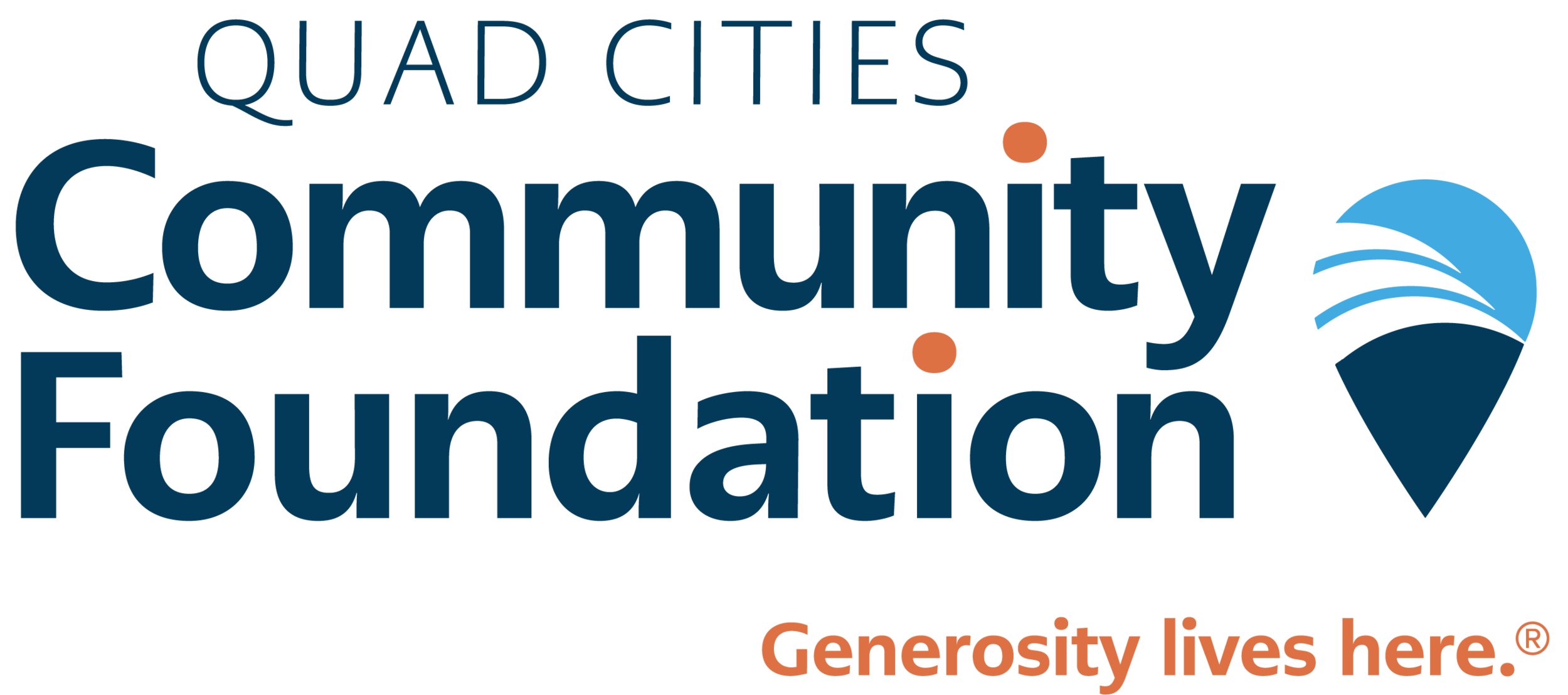Orientation Guide
Thank you for your commitment to serve. Local community impact happens through the hard work of dedicated volunteers such as you.
There are many facets to a community foundation – it takes a while to get the hang of how they all fit together. It can take more than a year for a new Affiliate Advisory Board member to really understand the full breadth of the organization. Please take the time to familiarize yourself with the contents of this orientation guide to learn affiliate and community foundation basics. Then, take time to explore the Affiliate Handbook: A Guide for Advisory Board Members website for details on your affiliate, donors, operations and more.
Download a PDF of the Orientation Guide here
What is a Community Foundation?
A community foundation is a charitable organization created by and for a community of people. As the lead foundation, the Quad Cities Community Foundation (QCCF) is governed by a Board of Directors comprised of community leaders. We are administered by a full-time professional staff.
We are a 501(c)(3) tax-exempt, publicly supported organization, and all donations are tax deductible to the fullest extent of the law. Iowa income taxpayers may also benefit from the Endow Iowa Tax Credit Program. Illinois income taxpayers may benefit from the Illinois Gives Endowment Tax Credit Program.
Gifts to the Community Foundation come from individuals, families, corporations, other businesses, nonprofit organizations, and a variety of other sources. Many of these gifts are given for endowment, which means they are invested in perpetuity to benefit our community today and for generations to come. People who invest in endowments are investing in the future. Every year, distributions from each of QCCF’s charitable funds are given to worthy organizations or causes.
QCCF also identifies current and emerging issues, channels resources to address our communities’ needs, and helps our region prepare for the future.
Operating expenses are paid from gifts designated by donors to cover these costs, through grants and partnerships with local and national foundations and organizations, and through support charges on funds.
What is the definition of a geographic affiliate of a community foundation?
There is no legal definition of a “geographic affiliate” although there are guiding principles. In the context of community foundations, a geographic affiliate is a component fund or collection of component funds. It is established within or by the lead community foundation that serves a defined geographic region (within or near the lead foundation’s area) and is organized and built under a common advisory group from that region. A geographic affiliate is simply a universal term for a common phenomenon among community foundations that goes by many names.
When are affiliates formed?
An affiliate can be formed for a number of reasons. The lead foundation could be approached by a community or donor who is interested in setting up funds to benefit a certain region. Alternatively, a lead foundation may form an affiliate as a way to cover a large territory, build assets, or engage more people in philanthropy and critical regional issues.
In any case, people in an area want a way to give back to their community. They want to grow local giving, provide local grants, and organize local resources to meet local needs. They are seeking a source of funds for a community and a way to make local decisions about how to use those funds. And they are seeking a cost-effective way to do all of this.
(Aspen Institute Community Strategies Group 2014).
When did affiliates first get started?
The first geographic affiliate of a community foundation was created by the Philadelphia Foundation in 1950. By 2009, fifty percent of community foundations had affiliates. Of the nearly 1,500 affiliates in 2009, seventy-five percent covered rural areas. And of those lead foundations with affiliates, nearly half were planning to add more affiliates.
The transfer of wealth is a bigger issue in rural areas. Affiliates help capture some of that wealth for charitable purposes. Urban community foundations are expanding with more affiliates statewide. States have also incentivized the formation of foundations and their affiliates through legislation such as the Endow Iowa laws. QCCF formed its first affiliate in 2003.
(Aspen Institute Community Strategies Group 2014).
What benefits are there to each?
An affiliate saves a community time and resources by using QCCF’s governance and leadership expertise, existing processes, policies and systems, as well as its nonprofit status. This allows the Affiliate Advisory Boards to focus on addressing community issues and growing assets rather than focusing on administrative processes. The affiliate gains credibility from QCCF’s established reputation, including National Standards® accreditation from the Council on Foundations (COF). Also, affiliates can band together more easily with other affiliates and QCCF to work on regional issues.
QCCF gains the perspective of the local leaders in the affiliate community and gains the strength of a growing regional identity. With more assets, QCCF can offer more investment options and efficiencies. The regional identity can help attract and leverage outside funding resources and help organize the region to address common issues.
The Affiliate Handbook: A Guide for Advisory Board Members
The Affiliate Handbook: A Guide for Advisory Board Members website should answer many of your questions about your Affiliate, QCCF procedures and how we all can work together in transforming our region through the generosity of our donors. Please contact us if you have any questions or suggestions for the handbook.
